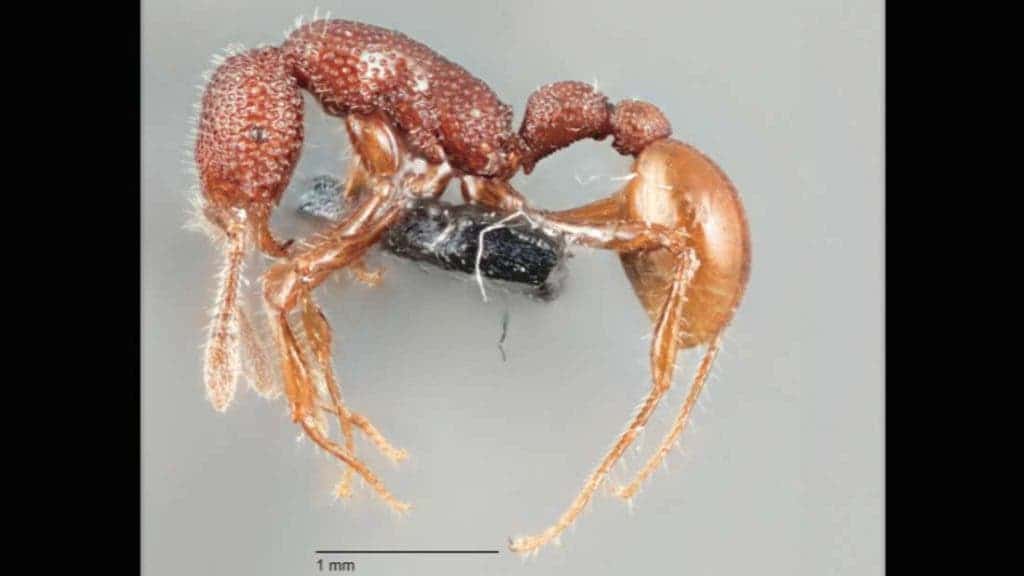For the first time, researchers have observed a fierce ant named after the most ferocious predator in our planet’s history. However, the ant has very little in common with its namesake.

Despite being described for over 20 years, T-Rex ants were an almost complete mystery — only a single specimen was ever collected and no one had ever observed them for over longer periods of time. We didn’t even really know where to find them. That’s why, when biologist Mark Wong stumbled across a colony of T-Rex ants in Singapore, he got really excited.
The ants are a part of the rare Tyrannomyrmex genus, which only features two other species. The colony Wong found was in a second-growth forest which was once a 20th-century orchard and rubber plantation. It was small, subterranean, and unobtrusive, but still a very valuable find.
“Our finding of T. rex below the ground surface highlights the need for more focused exploration of the ant communities within this environment,” he said.
The ants exhibit an intriguing behavior. For starters, they are timid, finicky eaters, more active during the night than during the day. They’re not aggressive at all and when threatened, they simply curl up and freeze, hoping to run away after the danger has passed. The only true similarity to their dinosaur namesake is the snout shape.
Researchers couldn’t quite figure out what they like to eat. After being taken into captivity, they rejected termites, smaller ants, mites, millipedes and even honey, Wong said. However, they did learn that the ant can turn to cannibalism — which is kind of bizarre when you think that they rejected things like honey.
“I had a good laugh when I saw them respond in this manner to little millipedes, mites, smaller ants, and basically whatever prey I tried to offer them,” Wong told National Geographic. “They wouldn’t even get close to honey—and only gently prodded [a] honey droplet with their antennae.”
After fleeing from other bugs and refusing to eat honey, researchers concluded that they probably eat tiny invertebrates or insect eggs.
The small colony featured 13 adult workers, two worker pupae, one male pupa, nine larvae and five eggs. The male pupa emerged as an adult, but the others ate him, exhibiting a rare, but not unheard of behavior.
“The colony is one big organism,” he said, “and this is one way in which it channels resources from some biological functions [in this case, reproduction] to others, based on which are deemed important in the prevailing environmental conditions.”
Unfortunately, after 10 days of observation, researchers decided to euthanize the ants to preserve their body for further research. We don’t know what the conservation status of these ants is.
However, this is a reminder that there’s still plenty of life just waiting to be discovered.
“Increasingly, we’re finding that many ants which live underground have unique life histories and ecological relationships that are poorly understood,” he said. “There’s this amazing world right beneath our feet, which we’ve hardly explored, and I’m excited to get started.”
The study was published the journal Asian Myrmecology.
Was this helpful?



